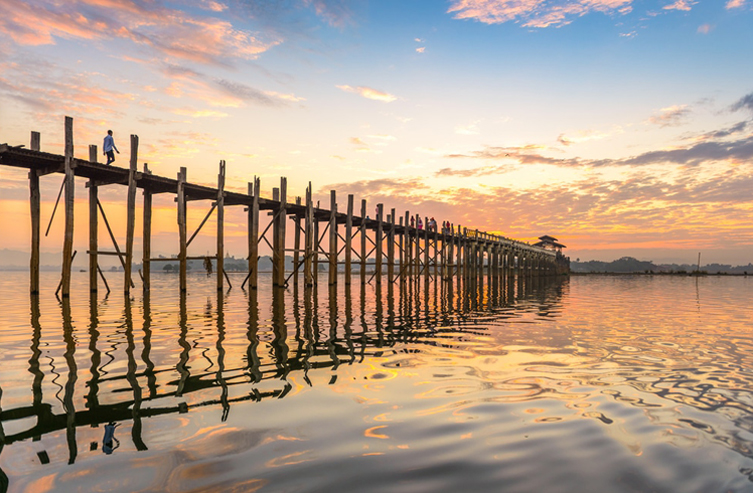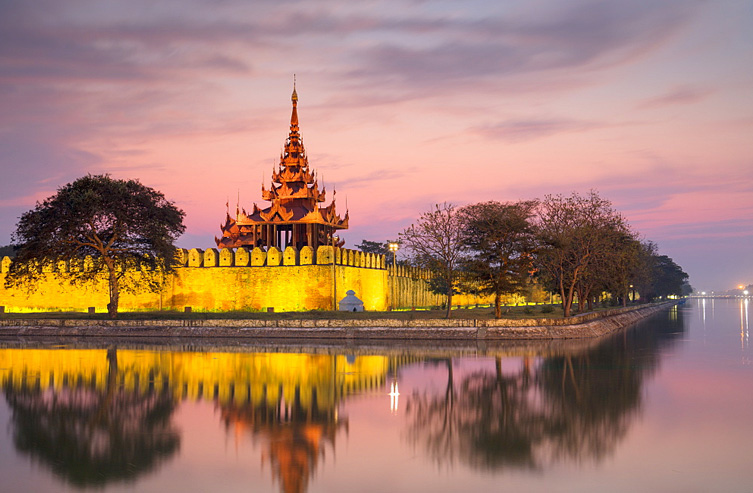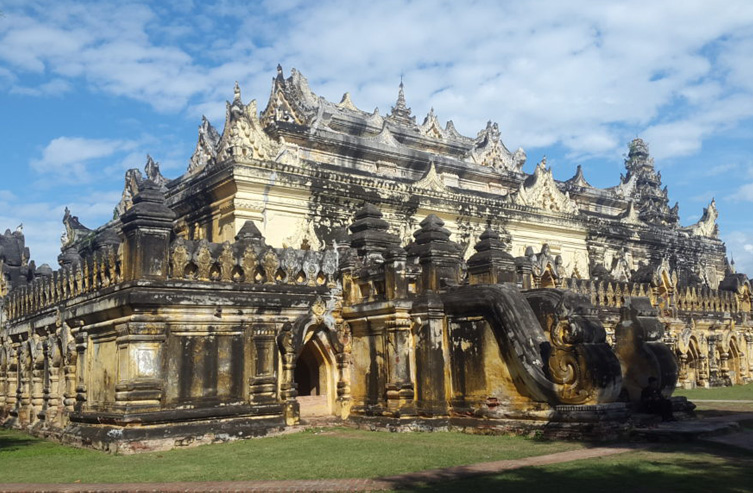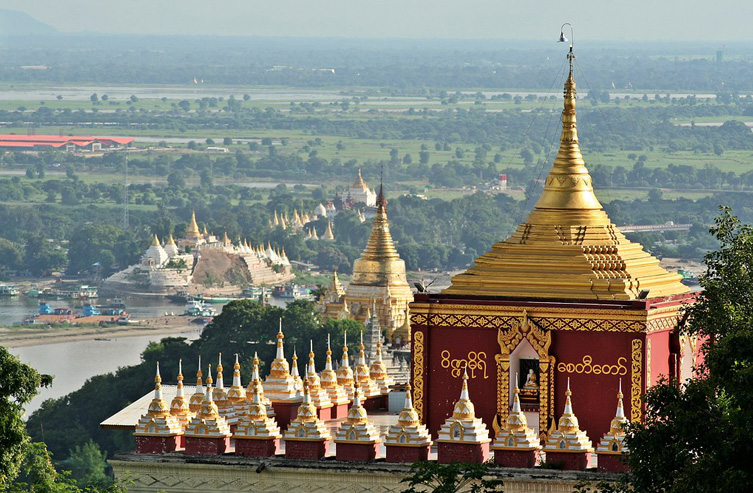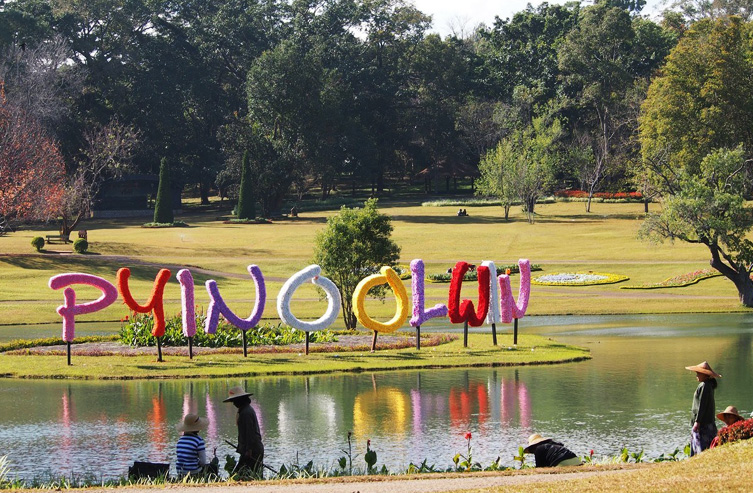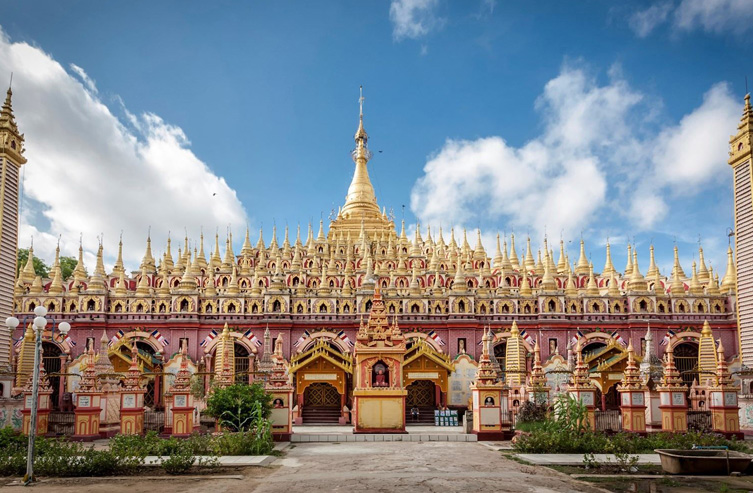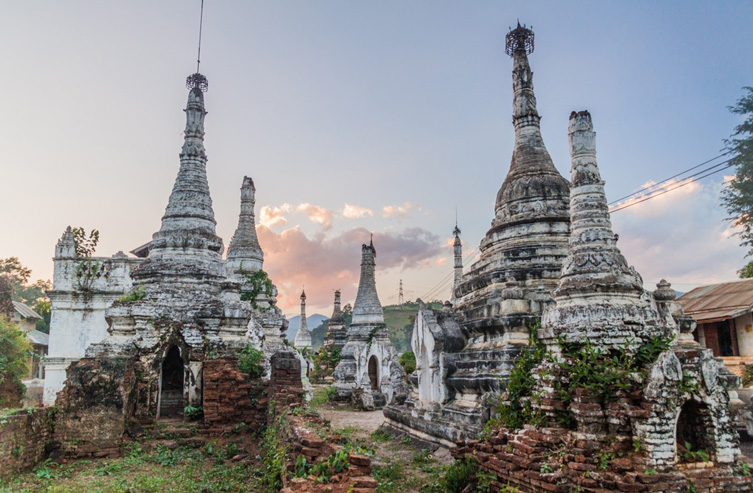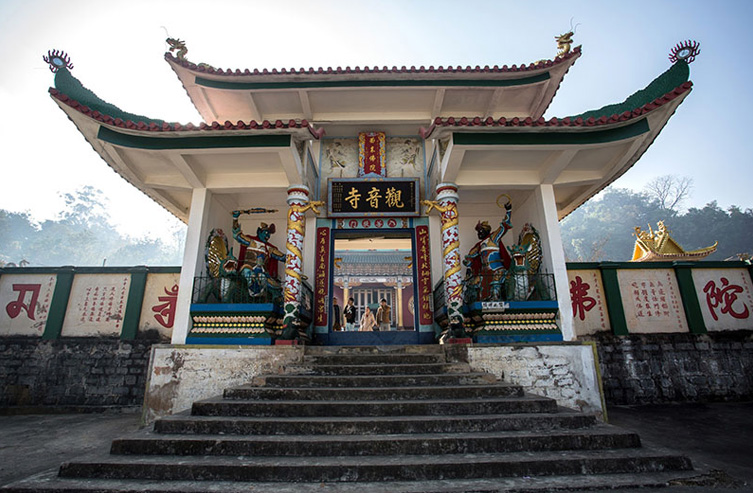Established in 1857, Mandalay is the second largest city in Myanmar, which is now as the culture centre since it was the last capital of Myanmar Kingdom. It is found in the upper part of the country, located on the east bank of the Irrawaddy River. Mandalay is where the Royal Palace of the Konbaung Dynasty is located, which was the last monarchy and independent kingdom of Burma. In 1886, present day Myanmar was conquered by British colonial forces. Ratanapunja was the ancient name of the city. It was given the name 'Mandalay' based on the 236-metre high Mandalay Hill, which is currently one of the most popular tourist destinations in the city.
During the reign of the Konbaung Dynasty, the city of Mandalay served as proof of the splendour of the Golden Age in Burma. When the Second World War occurred, the city and the Royal Palace were damaged in the fighting but were soon reconstructed. Today, Mandalay serves as the cultural centre of Myanmar and is home to several Buddhist monasteries and exquisite examples of Myanmar masonry. While the city is historically relevant, it remains fresh and contemporary with modern hotels and establishments.
Mandalay is famous for its cultural inheritance and religious importance. Mandalay houses at least a third of nation’s 500,000 monks and nuns. Since Mandalay is a major crafts centre, brass molding works, marble stone carving, gold leaf beating, tapestry workshop, silk weaving, silver smiting works, bamboo fan factory are the places of interest. The most famous is Mahamuni Buddha Image, which is gilded with about one ton of gold and some other precious stones, such as rubies, jades, sapphires, diamonds, pearls, emeralds, etc.
Mandalay Hill
Almost everyone who visits Mandalay goes to this hill. Mandalay hill, 230 meters in elevation, it is the landmark of Mandalay and serves as a natural watchtower because it overlooks the city. Visitors often watch the sunrise or sunset over the city plains here because of the stunning views. It is more than worth the trek however for the uninterrupted vistas over this pretty cit. According to legend, the Lord Buddha visited the hill and made a prophecy that a great city would be established at its foot. At the footage of Mandalay Hill, the Kuthodaw Pagoda and Golden Palace Monastery (Shwenandaw) are situated. The Kuthodaw Pagoda is home to what is considered as the world's largest book. The pagoda is surrounded with 729 upright stone slabs, with each slab having its own stupa and all 15 books of the Tripitaka are inscribed on the slabs. The building of this pagoda was started by King Mindon in1857, the same time work began on the Royal Palace. The Golden Palace Monastery is not only another example of a traditional Burmese monastery, but it is also a piece of the old Mandalay Palace. Part of the royal palace where King Mindon died, the teak structure was moved out of the palace under King Thibaw in 1880 and was converted into a monastery.
Amarapura
Some 11km south of Mandalay. It became the capital of the Konbaung Dynasty in 1783 during the reign of King Bodawpaya. Places of interest are Pahtodawgyi Pagoda, U Bein Bridge across the Taungthaman Lake, Kyauktawgyi Pagoda, Nagayon Pagoda, Mahagandayone Monastery and cotton and silk weaving cottage industries. U Bein Bridge, is made of wood and is famous for being the longest teak bridge in the world and is reinforced in places so that it doesn’t collapse.
Inwa (Ava)
Known as the Kingdom of Inwa during the Second Myanmar Empire, today it is a small town south of Amarapura. From 1364 Ava was the capital of Myanmar Kingdom for nearly 400 years until relocated to Amapura in 1841. Although there is not a great deal to be seen within the city, the massive old city walls are still easily traced. A number of small villages have sprung up inside the city walls and peasants till the soil where once the palace used to stand.
The sights to see in In-wa include Nanmyint Watch Tower, Maha Aungmye Bonzan Monastery, Bagaya Monastery, the lacquerware factory, and Inwa Bridge spanning the Ayeyarwad River. All these are places to visit by horse carts. The quiet and peacefulness, the different landscapes and the ruins of the ancient temples are the gifts of nature of Ava.
Sagaing
Once an ancient capital, Sagaing lies 21km south west of the Ayeyarwad River, opposite Inwa and 21 kilometres southwest of Mandalay. The Sagaing Hills are dotted with pagodas and there are over 500 monasteries, a retreat for some 6000 monks and nuns. Soon U Ponya Shin Pagoda (original built in 1312), Kaung Hmudaw Pagoda (a copy of the Mahaceti Pagoda in Sri Lanka), and Ywahtaung village (home of the silversmiths' guild) are places worth visiting.
Mingun
A delightful river trip from Mandalay is required to get to this marvelous unfinished temple. Its situated 11 km from Mandalay of the upstream of the Ayeyarwaddy River. Famous for the 90-ton Mingun Bell, supposedly the largest hung bell in the world, it was cast in 1790 on the orders of King Bodawpaya, who wished for it to be installed at the top of his planned giant 150 metre-high pagoda. Due to the king's death in 1819, however, the pagoda was never completed.
Pyin Oo Lwin (Maymyo)
The former British hill station of Maymyo, 67 km east of Mandalay, stands about 1,070 meters above sea level and relatively cool climate allowing the British ruling class to escape the fearsome heat of Mandalay and lower Myanmar. During that era, the town was called Maymyo (meaning ‘May’s town’ in Burmese, after a British colonel who was stationed there), and is still sometimes referred to this way today.
Surrounded by low hills within an area of approximately 30sq.km, the area is dotted with pine trees; eucalyptus and silver oak coffee, vegetables and strawberries are grown on the slopes of the hills, Sweater-knitting is the biggest occupation in town. This is also the centre for Myanmar's small but burgeoning new coffee industry.
Though the town was damaged during World War II, several of the old English houses were spared. There are many interesting ways to get around the town, well-known as National Kandawgyi Gardens (as known also botanical Garden), Dat Taw Gyaint waterfall, Peik Chin Myaung Trek. Taking the train from Pyin Oo Lwin to the scenic and laid-back town of Hsipaw (or further on to Lashio) makes for one of Myanmar’s most fascinating journeys, taking in the northern Shan hills and the famous Gokteik Gorge and viaduct.
Monywa
Monywa is situated on the banks of the Chindwin River 136 kilometres west of Mandalay. Monywa loosely translates to “Miss pancake town”. According to legend the town got its name after a Prince visited the village where he met a woman who fried pancakes. After he married her, the town was named Monywa.
Monywa serves as a major trade center for agricultural produce for India and Burma through Kalay Myo road and Chindwin river. In addition to 600 warehouses, Monywa supports mills for the production of cotton, flour, noddles and edible oil. Monywa boasts a number of attractions of interest such as the second tallest Buddha statue in the world and there is also a scenic monastery here which is famous for have a collection of more than 500,000 images of the Buddha. Moreover, the Boditahtaung Temple with 10000 Bodi Trees are also worth visiting. It is a pleasant, peaceful place, filled with the song of birds in a protected environment where nature and men are in perfect harmony. The largest reclining Buddha image in the world ‘Shwe Tharlyaung’ with measuring 300ft in length is even bigger than the colossal Shwethalyaung reclining Buddha image in Bago which has a length of 180ft only.
Hsipaw
Hsipaw is also sometimes referred to as Thibaw and is a vibrant town which is located in Shan State in Myanmar. Hsipaw is a thriving trade with local and foreign truckers stopping off on the way to and back from China, allowing for a burgeoning influence from Myanmar’s eastern neighbour.
There are a variety of pagodas and Buddha images dotted about the town thar are worth a visit, principally the Mahamuni Pagoda at the southern end. The Shan Palace (the ‘East Haw’) still stands and as well as the collection of crumbling stupas that have ben christened ‘Little Bagan’ and the Sao Pu Sao Nai Nat Shrine – where locals push the empty swings to please the resident guardian spirit. The Bawgyo Temple, which was built interesting architecturally Shan-Style.
The recently nicknamed sunset Hill (real name ‘Thein Daung Paya’) to the southeast of the city offers sublime views over Hsipaw and the Dokhtawaddy River and is a popular spot with both locals and visitors. Another key reason to visit Hsipaw is that it is located on the railway line from Mandalay which is one of the most famous and apparently beautiful railways in the world. Only the guesthouses and simple local restaurants are available, as it is a remote area and not so many foreign visitors going there.
Lashio
A Major trading town in Northern Shan State with a large Chinese population, many of which are on their way in to or out of China. It is the place with the population of nearly 150,000. The town itself is not of huge significance to the visitor but is worth a visit for its frontier atmosphere, being at the southern end of the Myanmar Road and the last major town before the Chinese border. The hills that surround the town are home to many ethnic minorities and during your time here you are sure to see many colourfully dressed minority people in the town’s streets and markets.
The interesting places, Mansu Pagoda stands on a hill, is said to be over 250 years old. More impressive is Sasana 2500 years Pagoda, reportedly built by the last Shan Chief in the area. Quan Yin San Temple, built around 40 years ago, is the main Chinese Temple in Lashio. The central market and Lashio Hot Sprint are also interesting to visit.

 (+95-9) 7757 30372
(+95-9) 7757 30372



